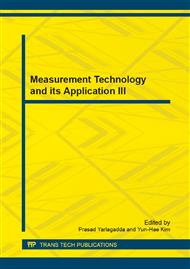[1]
J. Bar-Ilan, S. Shoham, A. Idan, Y. Miller, and A. Shachak. Structured vs. unstructured tagging—a case study. In Proc. WWW Collaborative Web Tagging Workshop, (2006).
DOI: 10.1108/14684520810914016
Google Scholar
[2]
G. Begelman, P. Keller, and F. Smadja. Automated Tag Clustering: Improving search and exploration in the tagspace. Proc. of the Collaborative Web TaggingWorkshop at WWW, 6, (2006).
Google Scholar
[3]
H. Chen and S. Dumais. Bringing order to the Web: automatically categorizing search results. Proceedings of theSIGCHI conference on Human factors in computing systems, pages 145–152, (2000).
DOI: 10.1145/332040.332418
Google Scholar
[4]
J. Gemmell, A. Shepitsen, B. Mobasher, and R. Burke. Personalization in Folksonomies Based on Tag Clustering. Intelligent Techniques for Web Personalization &Recommender Systems, (2008).
Google Scholar
[5]
J. Gemmell, A. Shepitsen, B. Mobasher, and R. Burke. Personalizing navigation in folksonomies using hierarchical tag clustering. Proceedings of the 10th International Conference on Data Warehousing and Knowledge Discovery, (2008).
DOI: 10.1007/978-3-540-85836-2_19
Google Scholar
[6]
T. Hammond, T. Hannay, B. Lund, and J. Scott. Social Bookmarking Tools (I). D-Lib Magazine, 11(4): 1082–9873, (2005).
DOI: 10.1045/april2005-hammond
Google Scholar
[7]
C. Hayes and P. Avesani. Using tags and clustering to identify topic-relevant blogs. International Conference on Weblogs and SocialMedia, March (2007).
Google Scholar
[8]
P. Heymann and H. Garcia-Molina. Collaborative Creation of Communal Hierarchical Taxonomies in Social Tagging Systems. Technical report, Technical Report 2006-10, Computer Science Department, April (2006).
Google Scholar
[9]
S. Bao, G. Xue, X. Wu, Y. Yu, B. Fei, and Z. Su. Optimizing web search using social annotations. In Proc. 16th Intl. Conf. on World Wide Web, pages 501–510, (2007).
DOI: 10.1145/1242572.1242640
Google Scholar
[10]
G. Begelman, P. Keller, and F. Smadja. Automated tag clustering: Improving search and exploration in the tag space. In Proc. WWW Collaborative Web Tagging Workshop, (2006).
Google Scholar
[11]
P. Boldi, M. Santini, and S. Vigna. Do your worst to make the best: Paradoxical effects in pagerank incremental computations. Internet Mathematics, 2(3): 387–404, (2005).
DOI: 10.1080/15427951.2005.10129106
Google Scholar
[12]
S. Brin and L. Page. The Anatomy of a Large-Scale Hypertextual Web Search Engine. Computer Networks and ISDN Systems, 30(1-7): 107–117, April (1998).
DOI: 10.1016/s0169-7552(98)00110-x
Google Scholar
[13]
C. Brooks and N. Montanez. Improved annotation of the blogosphere via autotagging and hierarchical clustering. In Proc. 15th Intl. Conf. on World Wide Web, pages 625–632, (2006).
DOI: 10.1145/1135777.1135869
Google Scholar


